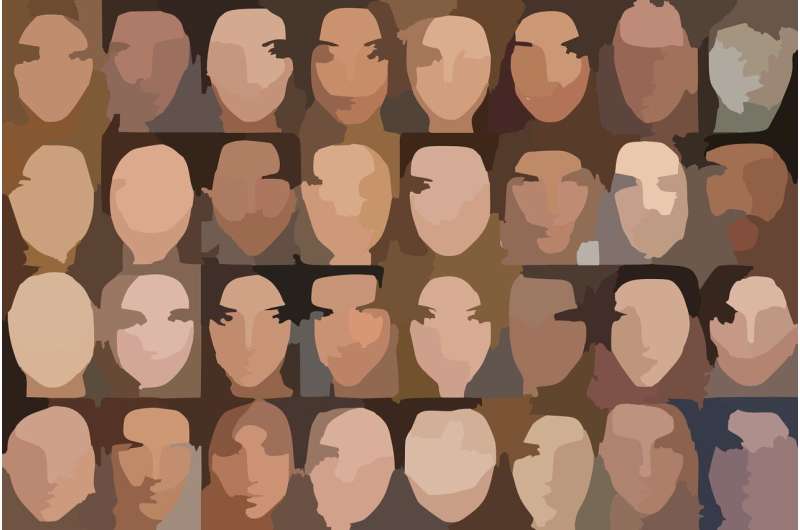This article has been reviewed according to Science X's editorial process and policies. Editors have highlighted the following attributes while ensuring the content's credibility:
fact-checked
preprint
trusted source
proofread
New AI model can alter apparent ages of facial images while retaining identifying features

NYU Tandon School of Engineering researchers developed a new artificial intelligence technique to change a person's apparent age in images while maintaining their unique identifying features, a significant step forward from standard AI models that can make people look younger or older but fail to retain their individual biometric identifiers.
In a paper published on the pre-print server arXiv and to be presented at the proceedings of the IEEE International Joint Conference on Biometrics (IJCB), Sudipta Banerjee, the paper's first author and a research assistant professor in the Computer Science and Engineering (CSE) Department, and colleagues trained a type of generative AI model—a latent diffusion model—to "know" how to perform identity-retaining age transformation.
To do this, Banerjee—working with CSE Ph.D. candidate Govind Mittal and Ph.D. graduate Ameya Joshi, under the guidance of Chinmay Hegde, CSE associate professor and Nasir Memon, CSE professor—overcame a typical challenge in this type of work, namely assembling a large set of training data consisting of images that show individual people over many years.
Instead, the team trained the model with a small set of images of an individual, along with a separate set of images with captions indicating the age category of the person represented: child, teenager, young adult, middle-aged, elderly, or old. This set included images of celebrities captured throughout their lives.
The model learned the biometric characteristics that identified individuals from the first set. The age-captioned images taught the model the relationship between images and age. The trained model could then be used to simulate aging or de-aging by specifying a target age using a text prompt.
Researchers employed a method called "DreamBooth" for editing human face images by gradually modifying them using a combination of neural network components. The method involves adding and removing noise—random variations or disturbances— to images while considering the underlying data distribution.
The approach utilizes text prompts and class labels to guide the image generation process, focusing on maintaining identity-specific details and overall image quality. Various loss functions are employed to fine-tune the neural network model, and the method's effectiveness is demonstrated through experiments on generating human face images with age-related changes and contextual variations.
The researchers tested their method against other existing age-modification methods, by having 26 volunteers match the generated image with an actual image of that person, and with ArcFace, a facial recognition algorithm. They found their method outperformed other methods, with a decrease of up to 44% in the rate of incorrect rejections.
More information: Sudipta Banerjee et al, Identity-Preserving Aging of Face Images via Latent Diffusion Models, arXiv (2023). DOI: 10.48550/arxiv.2307.08585



















